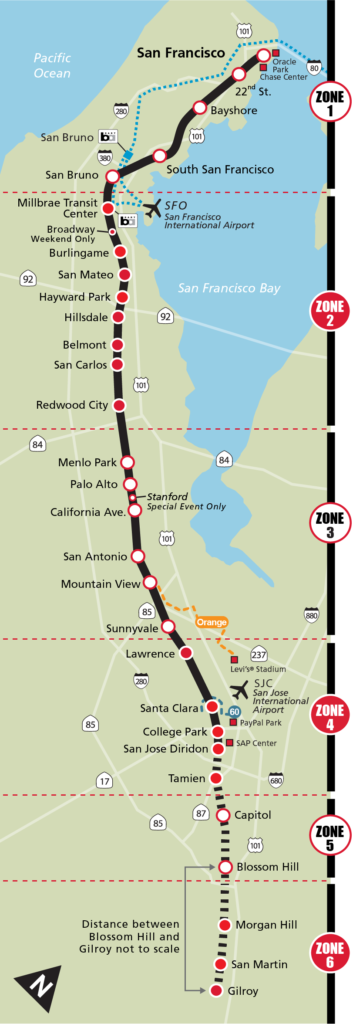
For Caltrain, $38.8MM ARP Additional Assistance Grant
Written by Marybeth Luczak, Executive Editor
“COVID-19 has posed a serious challenge to public transit, especially commuter railroads,” Caltrain Board of Directors Chair Steve Heminger said. Support from the ARP Additional Assistance Grant Program “ensures that, as the Bay Area continues to reopen and riders return to the system, Caltrain will be ready to get them where they need to go.”
Caltrain has been awarded $38.8 million from the Federal Transit Administration (FTA) under the American Rescue Plan (ARP) Additional Assistance Grant Program.
The ARP Additional Assistance Grant Program is for transit systems that demonstrate additional pandemic-associated needs. The funding covers operations costs and sanitation efforts to combat the spread of COVID-19, and helps transit systems avoid layoffs and furloughs. It is supplemental to funds distributed as part of the ARP Act of 2021.
“COVID-19 has posed a serious challenge to public transit, especially commuter railroads,” Caltrain Board of Directors Chair Steve Heminger said during the March 4 award announcement. “We are incredibly grateful to President Biden, [U.S. Department of Transportation] Secretary Buttigieg and our entire federal delegation led by Speaker [Nancy] Pelosi [D-Calif.] for continuing to support public transit. This federal support ensures that, as the Bay Area continues to reopen and riders return to the system, Caltrain will be ready to get them where they need to go.”

Caltrain reported “significant” losses in fare revenue during the pandemic’s early days, when ridership fell to 5%; ridership remains at about 20% of previous levels. “[P]re-pandemic, over 70% of the operating funds came from fares,” according to the agency.
Federal government funding through ARP, as well as the Coronavirus Aid, Relief, and Economic Security (CARES) Act and the Coronavirus Response and Relief Supplemental Appropriations (CRRSA) Act, “has allowed Caltrain to maintain service throughout the pandemic,” the agency said. “The funding received will help to balance projected deficits through FY 2023.”
Owned and operated by the Peninsula Corridor Joint Powers Board, Caltrain provides commuter rail service from San Francisco to San Jose, with weekday rail service to Gilroy (see map, right). The agency’s Electrification Project, which began in 2017, is upgrading and electrifying the 51-mile doubletrack system from the 4th and King Caltrain Station in San Francisco to the Tamien Station in San Jose. Earlier this year, Caltrain said it was on track for completion in 2024.
In related developments, San Francisco Bay Area Rapid Transit District (BART) and Washington Metropolitan Area Transit Authority (WMATA) will receive $270 million and $120 million, respectively, under the ARP Additional Assistance Grant Program.


